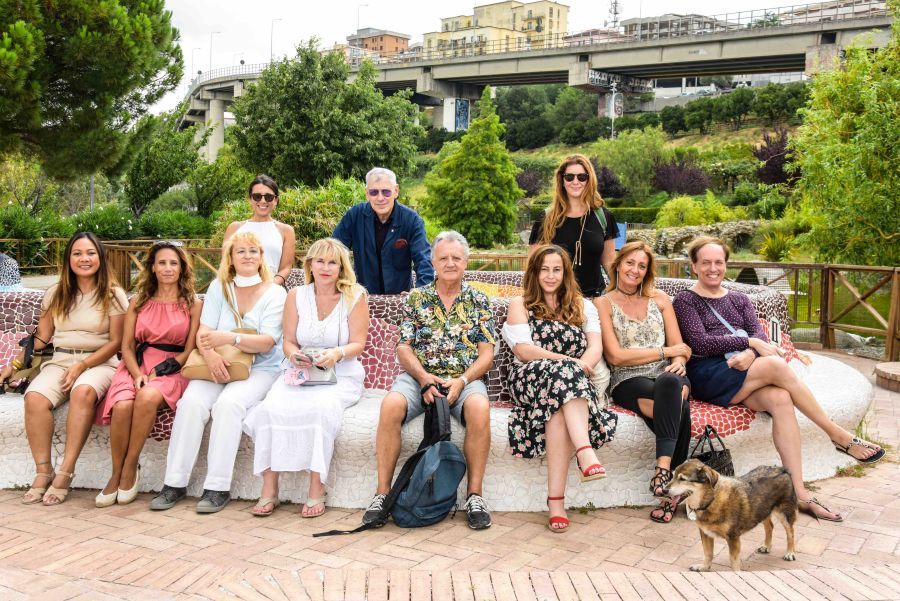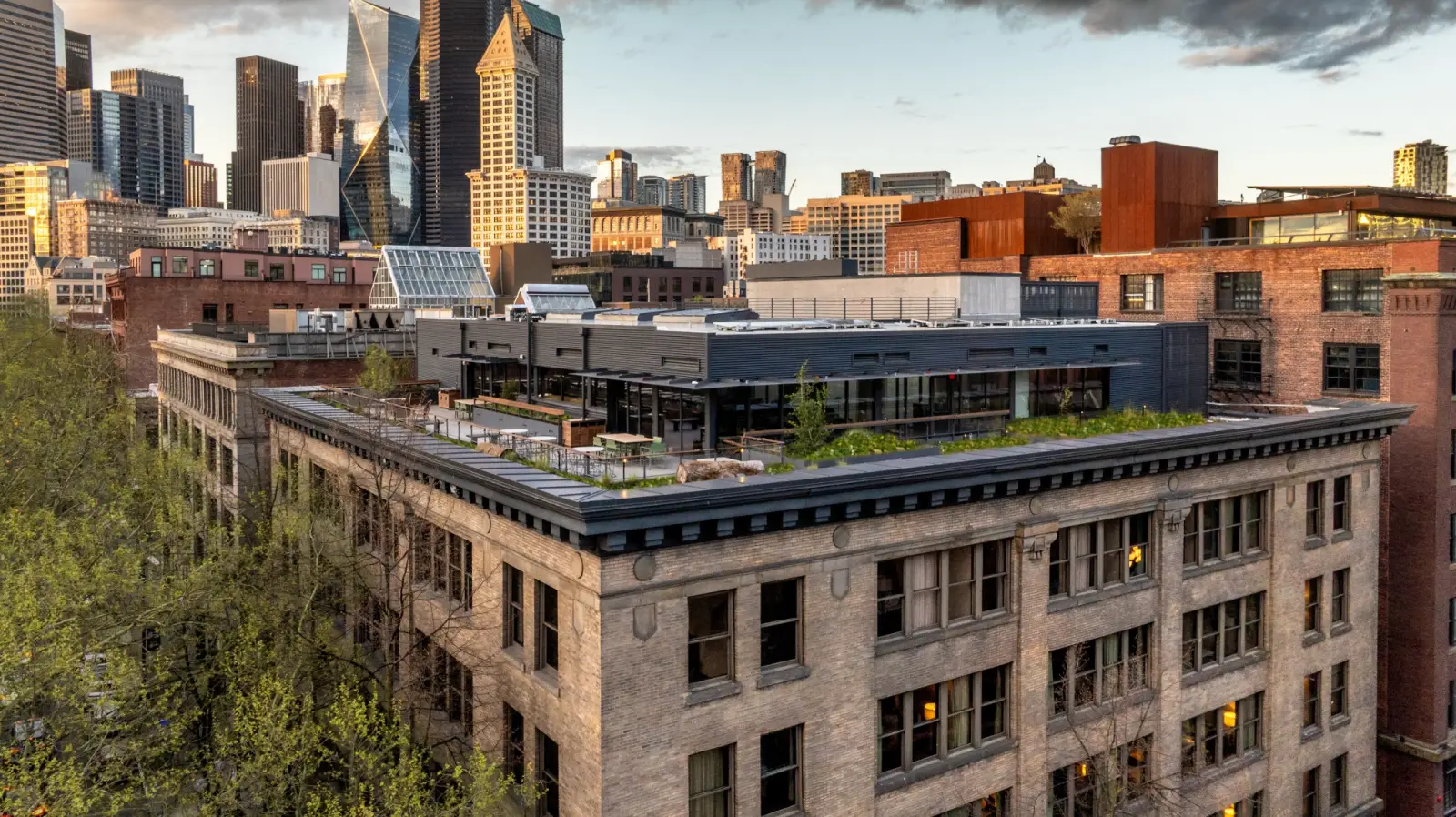Daniela Corti Events under the patronage of Enit, the Italian national tourism board organized an educational tour to the province of Catanzaro (Calabria, southern Italy), for a selection of travel bloggers and specialized journalists.
Held under the Undiscovered Italy Tours format, the tour was realized in partnership with the Chamber of Commerce of Catanzaro and with the support of the Municipality and Proloco of Tiriolo as well as of the 3T Association. Sponsor for gadgets: Amarelli licorice factory.
The tour ran from Monday 19th to Thursday 22nd July. Fifteen participants visited places and venues suitable for either weddings or national and international events, personally meeting the best players of the local industry, with special reference to textiles and the food & wine chain.
Local media coverage was by LaC tv and LaC news24. Antoior travel agency collaborated. Here is a thematic chronicle of the visited places.
Daniela Corti said, “The territory of Catanzaro can rightly be defined as one of the richest in the world in terms of opportunities for tourism and cultural heritage. It offers a number of excellent venues for any type of event, and I am really pleased to have shown a summary of them to such qualified professionals. A special thanks to the Chamber of Commerce of Catanzaro and to President Daniele Rossi, for his efforts in favour of Calabria’s incoming tourism, which are paying off,”.

Venues
Borgo del Convento (Petrizzi)
An XV century monastery set on the hills in front of the Ionian sea. An iconic piece of Italian history, protected as an artistic and cultural heritage, an elegant farmhouse and a surprising venue for weddings, events and parties. 300 square meters of outdoor dining room, large internal rooms, 10,000 square meters of gardens, two churches and a chapel, 16 rooms with over 40 beds. The group was based here.
Lento wine cellars (Amato)
The Lento family has linked their name to Lamezia Doc wine and history, dedicating themselves to the business with a passion and a commitment that have been renewed for four generations. In the estate, surrounded by vineyards, guided tours, tastings, wedding receptions, conferences, meetings, social dinners, business meetings are organized. Flexible and customized solutions.
Mediterranean Biodiversity Park (Catanzaro)
It is dedicated to the typical Mediterranean flora and fauna. The botanical garden has innumerable versions of plants and shrubs which are characteristic of the Mediterranean climate zone, directly managed by the agricultural school located within the park.
Mulinum (San Floro)
This farm is the expression of the dream of giving life to a complete and controlled wheat supply chain, starting from the organic cultivation of local seed varieties through the production of wholemeal, stone-ground flours. Subsequently, the flours are transformed into bread according to ancient recipes and with the use of mother yeast, as well as into sweet and savoury baked goods.
Nido di Seta (San Floro)
A group of young Calabrians committed to protecting environment and landscape, taking up the ancient chain of jasmine growing. An eco- experiential path is provided into the heart of an adult pine forest where landscape and nature challenge the visitor’s eye. An educational farm let people witness the production of silk, from worms to the finished product.
Osteria Il Frantoio (Soverato)
Immersed in the ancient village of Soverato Superiore, located in the premises of a finely restored ancient oil mill, this tavern has rustic-chic interiors that welcome about thirty people in a romantic and familiar atmosphere, with a huge millstone and a mighty press that surround the furniture. The recipes revisit traditional courses in a contemporary key. 300 labels in the cellar. Swing Restaurant (Soverato): specialized in seafood, it offers modern cuisine with typical local products. Original menus get unique flavour thanks to the constant search for the perfect taste, by combining the different fresh ingredients with the correct preparation and a pinch of originality.
Tenuta delle Grazie (Curinga)
Surrounded by olive groves, it boasts a calm and serene atmosphere, softened by green meadows and vegetation. The old mill, the stone farmhouse, and the ancient water channel immediately transport the guest into the past. The Michelin-starred chef, through the elaboration of his dishes, offers typical menus of Calabrian cuisine revisited in a modern way.
Culture
Chagall. The Bible
An exhibition, hosted in the Monumental Complex of San Giovanni (Catanzaro), on Marc Chagall’s relationship with the Jewish religion and his very personal way of re-reading the biblical message. 170 graphic works are here displayed, accompanied by a large didactic apparatus on Chagallian and biblical themes, on Judaism in Calabria and on the influences of Jewish art on contemporary culture. Open until August 29th.
Costume Museum (Tiriolo)
Housed in a wing of an elegant building of the 1930s. It is a research and study centre of both the ethnographic heritage and the historical evolution of Calabrian popular clothing. The exhibition itinerary allows you to appreciate as many as 35 typical dresses of the Calabrian tradition, some resulting from research and recovery, others copies of models faithful to the originals.
Exhibition of Popular Musical Instruments (Tiriolo)
Set up in the suggestive Scala Coeli Church, it represents a fascinating journey through the history and culture of Calabria through musical instruments – bagpipes, Calabrian lyre, flutes, tambourines, which together with accordion and bass are the basis of the “tarantella riggitana”. “Pietà” by Antonello Gagini (Soverato): kept in the church of Maria Santissima Addolorata, it dates back to 1521 and is in white Carrarese marble depicting the Virgin with the dead Christ in her womb. It bears in the face of the Madonna the signs of a profound, very human pain, very far from the model of Michelangelo’s Pietà. Peaceful is the death of Christ instead.
Silk Museum (San Floro)
Set up in the Caracciolo Castle, it houses the relics of Calabrian silk history – period costumes, damasks, sacred vestments, contemporary raw silk artifacts. One section is dedicated to mulberry, silkworm and natural fibres. One area is reserved for natural dyes while another contains the textile laboratory and colour samples.













